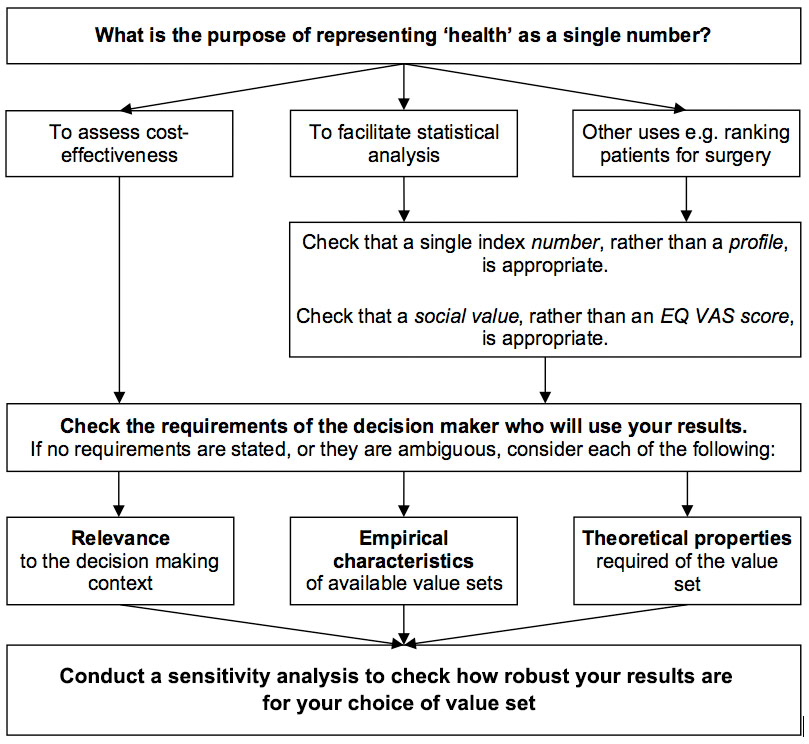Value sets
The responses to the five EQ-5D dimensions (i.e. an EQ-5D health state or profile) can be converted into a single number called an index value. The index value reflects how good or bad the health state is according to the preferences of the general population of a country/region. The collection of index values for all possible EQ-5D states is called a value set. Value sets are available for the EQ-5D-3L, EQ-5D-5L and EQ-5D-Y for different countries/regions. Several valuation techniques have been used to generate these value sets: time trade-off (TTO), visual analogue scale (VAS), and more recently, discrete choice experiments (DCE).
For the EQ-5D-5L a standardized valuation study protocol (called EQ-VT) was developed by the EuroQol Group to create standard value sets for the EQ-5D-5L. EQ-5D-5L users are recommended to use these standard values sets produced with EQ-VT.
An international valuation protocol for EQ-5D-Y was published in 2020. A number of EQ-5D-Y valuation studies are in development and EQ-5D-Y value sets have begun to be published.
The responses to the five EQ-5D dimensions (i.e. an EQ-5D health state or profile) can be converted into a single number called an index value. The index value reflects how good or bad the health state is according to the preferences of the general population of a country/region. The collection of index values for all possible EQ-5D states is called a value set. Value sets are available for the EQ-5D-3L, EQ-5D-5L and EQ-5D-Y for different countries/regions. Several valuation techniques have been used to generate these value sets: time trade-off (TTO), visual analogue scale (VAS), and more recently, discrete choice experiments (DCE).
For the EQ-5D-5L a standardized valuation study protocol (called EQ-VT) was developed by the EuroQol Group to create standard value sets for the EQ-5D-5L. EQ-5D-5L users are recommended to use these standard values sets produced with EQ-VT.
An international valuation protocol for EQ-5D-Y was published in 2020. A number of EQ-5D-Y valuation studies are in development and EQ-5D-Y value sets have begun to be published.
The starting point when selecting a value set is the anticipated use of the EQ-5D data. Once this decision has been made, a set of weights that represent the general population’s preferences might be the ideal system of choice, but such a system might not be available for your country/region. The following flowchart and considerations may help you to choose the most appropriate value set. For guidance on submissions to NICE please see the latest NICE Health Technology Evaluation Manual (see Section 4.3) and note that more information is available here.

Economic studies
For economic studies where cost-utility analysis is anticipated, most health economists would recommend a choice-based based value set, derived from TTO or DCE data. If a choice-based value set is not available for your country/region, you can select a choice-based value set for a country/region that most closely approximates yours. Alternatively, you can use a VAS-based value set if that is available for your country/region.
For economic studies where cost-utility analysis is not anticipated, either a VAS-, DCE- or a TTO value set can be used. If a value set is not available for your country/region, you can select a value set for a country/region that most closely approximates yours.
Crosswalk value set mapping
If a value set for your preferred adult EQ-5D version (5L or 3L) is not available for your country/region but a value set for a different EQ-5D version is available, then a “crosswalk” mapping function can be used to derive utility values. The mapping function links EQ-5D descriptive system responses to the available value set. More information is available on the Valuation of EQ-5D webpage.